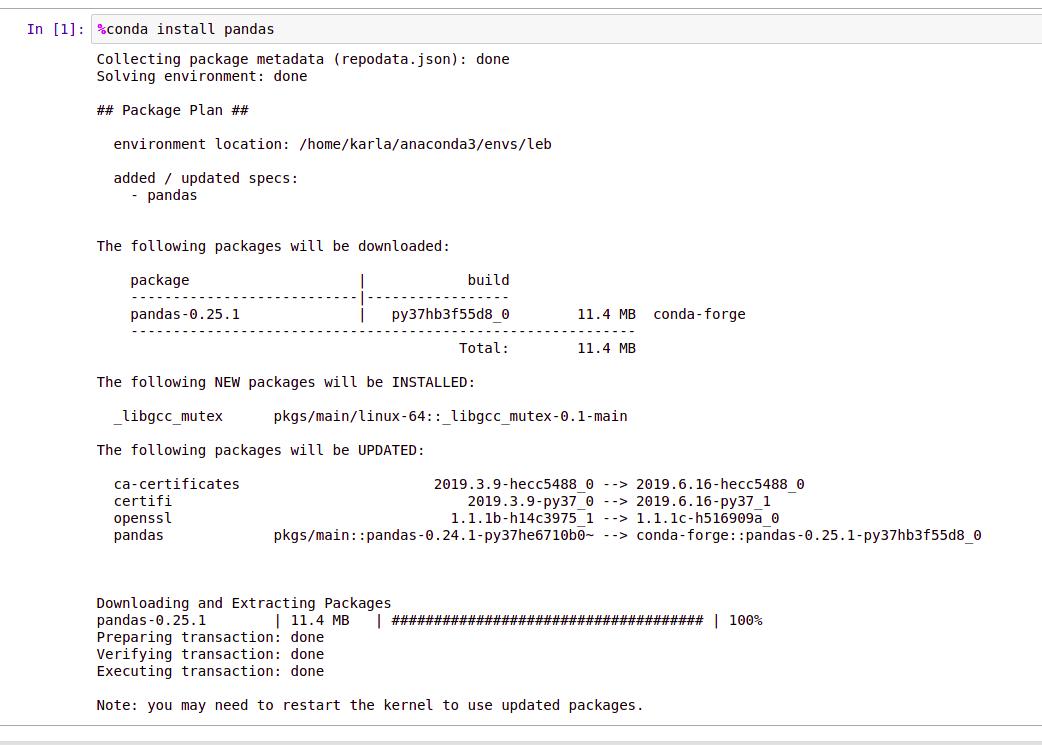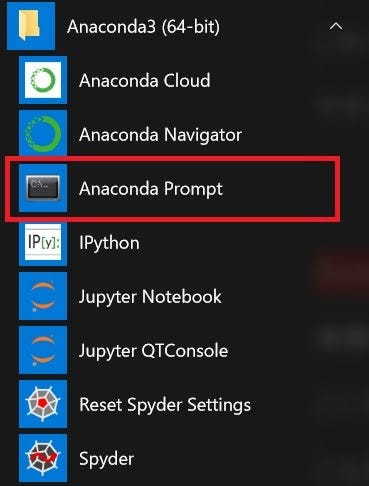

- How to install ipython with conda how to#
- How to install ipython with conda update#
- How to install ipython with conda download#
Installing using a package manager like pip or conda will ensure the necessary packages are installed.

However, most of the other packages (including some of the essentials to create a basic environment) didn't explicitly support Python 3.9 yet. IPython relies on a number of other Python packages. On, Python 3.9 was made available on conda-forge.
How to install ipython with conda how to#
In order to install ipython for python 3.9, pip3.9 install ipython T his article provides a tutorial on how to install graphlab with python 2.7 on a pre-installed Anaconda v4.9.1, python 3.x environment.After following through this article, you will be able to install graphlab on Python 2.7 with multiple ipython kernels. Once the installation is done, a new executable will be created for python 3.9 and pip 3.9 will be created.
How to install ipython with conda download#
Instead, you can download the python 3.9 executable and install it. once installed you can use a Conda python3 session to pip install IPython 3. Python 3.9 is now available in conda-forge.Īs pointed out in the comments, python 3.9 is not yet there on any channels. After I went through the steps below with miniconda, I uninstalled that. dotnet tool install -g can now directly create python 3.9 environment using the following command conda create -n p圓9 python=3.9 Install IQ#, a kernel used by Jupyter and Python that provides the core functionality for compiling and running Q# operations. Install the qsharp package, a Python package that enables interop between Q# and Python.

Close your terminal for the changes to take effect.įrom a new terminal, create and activate a new conda environment named qsharp-env with the required packages (including Jupyter Notebook and IQ#) by running the following commands: conda create -n qsharp-env -c microsoft qsharp notebookįinally, run python -c "import qsharp" to verify your installation and populate your local package cache with all required QDK components. user to install into the users home jupyter directories-system to perform installation into system-wide jupyter directories-sys-prefix to install into pythons sys.prefix, useful for instance in virtual environments, such as with conda-symlink to symlink the nbextensions rather than copying each file (recommended, on non-Windows platforms). You should now be able to launch and interact with iPython notebook files.
How to install ipython with conda update#
First, run the following conda commands in your Terminal: conda update conda conda update ipython conda update jupyter.

Then run the appropriate command for your shell, for example. Next, we’ll need to install iPython so that you can view iPython notebooks, such as those hosted in the SAAS Crash Courses repository. Open a terminal and navigate to the bin directory inside your selected install location (for example, /home/ubuntu/miniconda3/bin). (Linux) If haven't done so during installation, you can still initialize conda now. By default, the script's execution will be blocked on Windows, and requires modifying the PowerShell execution policy with the following command (executed from within PowerShell): Set-ExecutionPolicy -Scope CurrentUser RemoteSigned
ipython kernel install -user -nameTo work with PowerShell, conda will configure a startup script to run whenever you launch a PowerShell instance. conda install ipykernel installs all dependencies needed to use jupyter.


 0 kommentar(er)
0 kommentar(er)
